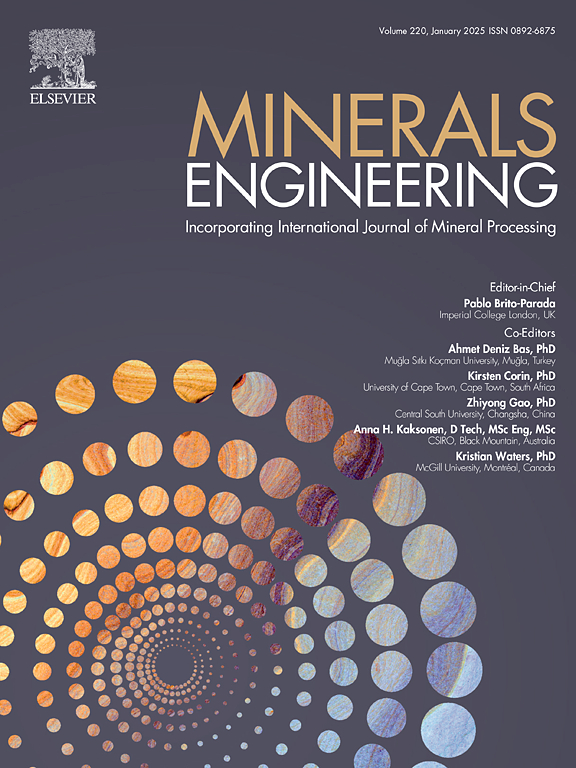Understanding the effect of particle shapes on particle motions in Reflux Flotation Cell’s downcomer through fluid dynamic modelling
IF 4.9
2区 工程技术
Q1 ENGINEERING, CHEMICAL
引用次数: 0
Abstract
The Reflux Flotation Cell (RFC) developed in recent years has proven to be able to process a wide size range of particles and enhance the throughput in coal flotation. Our previous research has shown that the recovery of graphite particles with an aspect ratio of 0.2 is significantly lower than the recovery of coal particles with an aspect ratio of 0.8, attributed to the higher drag on graphite particles resulting in stronger repulsion between particles and bubbles in the RFC’s downcomer. In this study, a three-phase CFD simulation was performed to expand the understanding of the effect of particle shapes on particle flotation. From the simulation result, it was found that compared to the particles with an aspect ratio of 0.8, the flow of the particles with an aspect ratio of 0.2 became more concentrated at the middle of the stream when entering the gas inlet region due to the higher drag force. The higher drag force also created a stronger downward push on the particles, resulting in a lower solid volumetric fraction in the gas inlet and the high turbulence region directly below it in the downcomer. A smaller gas–solid relative velocity was observed for the particles with an aspect ratio of 0.2 in the high turbulence region as well. Those factors could result in a lower particle-bubble collision efficiency and a lower particle floatation recovery. The simulation result also indicated that the reduction of the gas flux reduced the high drag force on the particles with an aspect ratio of 0.2, which provided a smoother compression of the particle phase in the gas inlet, raised the solid volumetric fraction in the gas inlet and the high turbulence region and increased the gas–solid relative velocity in the high turbulence region. As a result, the reduction of the gas flux could benefit the particle-bubble collision and particle flotation for the particles with an aspect ratio of 0.2.
求助全文
约1分钟内获得全文
求助全文
来源期刊

Minerals Engineering
工程技术-工程:化工
CiteScore
8.70
自引率
18.80%
发文量
519
审稿时长
81 days
期刊介绍:
The purpose of the journal is to provide for the rapid publication of topical papers featuring the latest developments in the allied fields of mineral processing and extractive metallurgy. Its wide ranging coverage of research and practical (operating) topics includes physical separation methods, such as comminution, flotation concentration and dewatering, chemical methods such as bio-, hydro-, and electro-metallurgy, analytical techniques, process control, simulation and instrumentation, and mineralogical aspects of processing. Environmental issues, particularly those pertaining to sustainable development, will also be strongly covered.
 求助内容:
求助内容: 应助结果提醒方式:
应助结果提醒方式:


